Virtual Events May-June
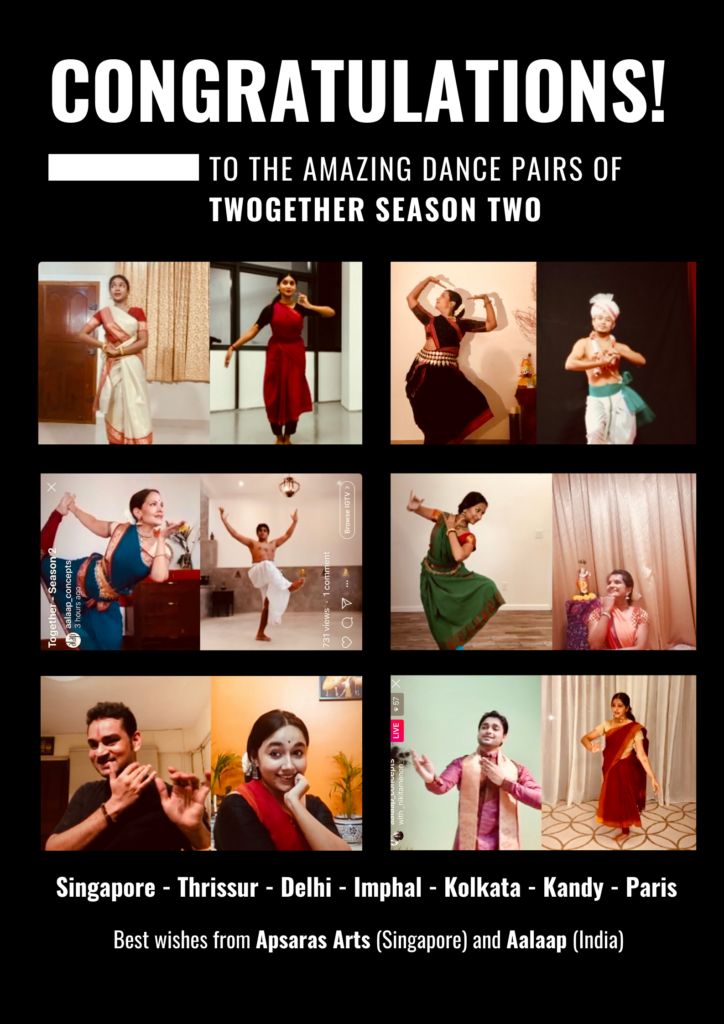
by Vidhya Nair It has been a busy month for Apsaras Arts team over the months of May- June. From in depth interviews and discussions to cross-border experimental collaborations like “Twogether”; from insightful dialogues at the Spotlight Series to solo performances by company dancers in support of worthy cause. Here is a chronology of highlights of the virtual events from our diary over the last 30 days. On 17th May & 31st May – Shukran: A Tribute to Singapore’s Migrant Workers. An initiative by Kathak dancer, Sunena Gupta to create community awareness and outreach through dance. Apsaras Arts’s Kathak dancer/choreographer, Shivangi Dake Roberts performed a segment in episodes 3 and 5. In her segments, she presented invigorating pieces. With her swift movements and crisp turns, these meaningful nritya pieces evoked a variety of moods and expressions. This series gave opportunities to many Kathak, Bharatanatyam and Odissi practitioners to express strength and unity through dance and the fundraising objectives were exceeded. Do watch the episodes here:https://youtu.be/uQStizN00O0 Link: https://youtu.be/6OYmHzjjlgs On 18th May Mohanapriyan Thavarajah was featured at the Home Sketches series @Aalaapconcepts Instagram channel. Aalaap’s theme of Home Sketches featured six dancers reflecting on the idea of home. A place of refuge, an abstract space filled with emotion, feelings and memories. In this session Mohanapriyan Thavarajah engaged in a conversation with Aalaap’s Akhila Krishnamurthy where he hared his memories of growing up in Srilanka, his education in South India and his professional move to Singapore which led to his eventual growth as a dancer while learning to live as a global citizen. For him, wherever dance takes him, it becomes home, a journey which started since he was 14. He felt that he could immediately relate to the Nadanar story for this interpretative performance whose dream destination was to reach Chidambaram where the god of Dance Lord Nataraja resides. This journey was fraught with difficulties being a leather-maker navigating the strict Brahminical society and the perils of the caste system. Ultimately, he proved that he is the beloved to Lord Shiva and there was no one who could stop him from reaching Chidambaram. He immerses himself in his Bhakti for the infinite dancer, Lord Nataraja, reminding us that true love and devotion to ones’ mission can lead us on the path to a blissful heaven. Priyan used verses from Gopalakrishna Bharathi’s Nadhanar Charithram to create this interpretation of home. Many who watched this performance found it profoundly meaningful and a soulful interpretation of Home. On 22nd to 27th May Apsaras Arts in collaboration with @Aalaapconcepts presented a series of duet performances called “TWOgether Season II”. In this season six pairs of dancers from Singapore and India presented duets showcasing the differences and similarities of the different classical dance forms. Bharatanatyam and Odissi dancers from Singapore (Mohanapriyan Thavarajah, Seema Hari Kumar, Nikita Menon, Asvhini Sundaram, Soumee De) and France (Anusha Cherer Duchesne) faced Mohiniattam (Annie Sajayan), Manipuri (Sinam Basu Singh), Kuchipudi (Bhavna Reddy), Odissi (Vrinda Chaddha), Kathak (Souvik Chakraborty) , Kandyan (Geeth Premachandra) dancers from India and Srilanka. Each performance was unique as the duos presented a combination of two or three dance sequences that showcased aspects of their dance forms- nritta, nritya, abhinaya, cultural influences. Over the thirty minutes , of discussion-demonstration, the audiences learnt about the the beauty and uniqueness of each of their dance forms and practices. In this experimental split-screen showcase, the dancer duos leveraged the communication in a way that gave us the impression they were indeed in one room (instead of being miles apart)! Do watch the series on the IGTV channel of @Aalaapconcepts. During the interaction with the audiences, the dancers cited the key challenges they faced which in overcoming the challenges of technology, time lag in music and expressions, getting to know a new acquaintance across borders, understanding each other’s practices and collaborating within 5 days timeframe, adapting to each other’s time-zone. However, each appreciated the opportunity this season offered them to sharpen their own skills and adaptability in times of uncertainty. Many audience members asked about their creative process within the week and their approach to bring synergy to their ideas. The dancers shared that this “twogetherness” imposed greater clarity of collaboration an a disciplined commitment to prepare credible pieces within the short preparation window, helped them overcome the impasse. They also felt that this initiative broke down barriers of distance and helped them reach out to fellow dancers in similar mental and emotional frame during the Covid19 lockdown, bridging this physical gap through dance. From the Singapore audience perspective, it was a rare opportunity to learn up and close about the intricacies of artforms like Mohiniattam, Manipuri and Kandyan dancers. This collaborative concept allowed for intimate interaction with these dancers – their thought process and their willingness to adapt and find camaraderie with a performer based overseas. Hear more about the experiences of the dancers in this video. Add link to feedback video On 6th, 7th and 12th June, Apsaras Arts company dancers, Kshirja Govind, Kritika Rajagopalan and Maanasa Sri Granesh performed on Instagram channel @samarpanaforartsandwellbeing as part of Bloom, Samarpana’s Art-heals series which showcases young talented artistes. The dancers, who performed several jathiswaram and abhinaya pieces, appreciated this opportunity to use dance as a medium to express themselves and keep up their dance practice. Kshirja, an undergraduate who has been actively performing from a young age finds much relief from school stresses and freedom of expression as a dancer and is constantly working on her own choreography. Kritika who moved to Singapore last year from Chennai teaches young students at Apsaras Arts and is finding new paths to her dance journey in ensemble works. Maansa Sri Ganesh has been with Apsaras Arts dance company for the past 3 years and has performed for several of the comoany’s iconic productions and tours. These dancers offer their performances to the cause of raising funds for other artistes who need financial support during this COVID19 pandemic.
Spotlight Series
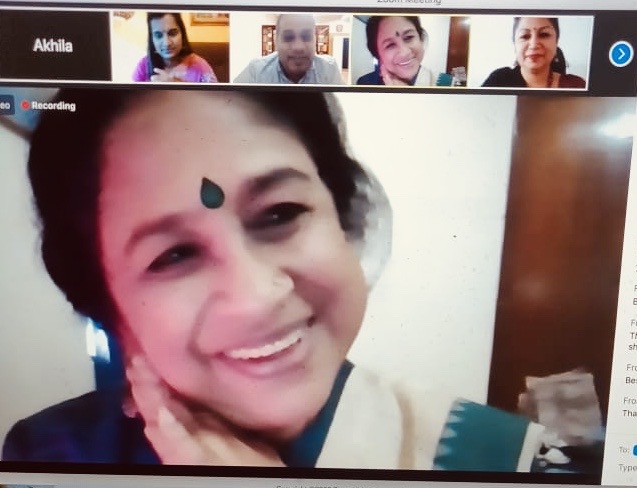
On May 31st, Apsaras Arts held its 4th Spotlight Series Session with Dr Gowri Ramnarayan. In this session on the “Shaping of a Nayika – evolving characters onstage” Dr Gowri Ramnarayan used images from her theatre productions and shared the thought process behind them all. From the techniques used to shape characters such as Yasodhara, the wife of Prince Gauthama to the use of thought provoking monologues by the characters from epics such as Manthara, Urmila, Shantha and Soorpanaga, the lesser known heroines from the Ramayana, tt was an absorbing session attended by over 60 participants. The Q & A helped dance practitioners ask practical questions on how the stage can be used with images of Nayakas through props like cloth, painting, lighting; how to choose appropriate words in scripting and the importance of silence and pause within a performance which creates a powerful experiences for the audience.
Special Feature
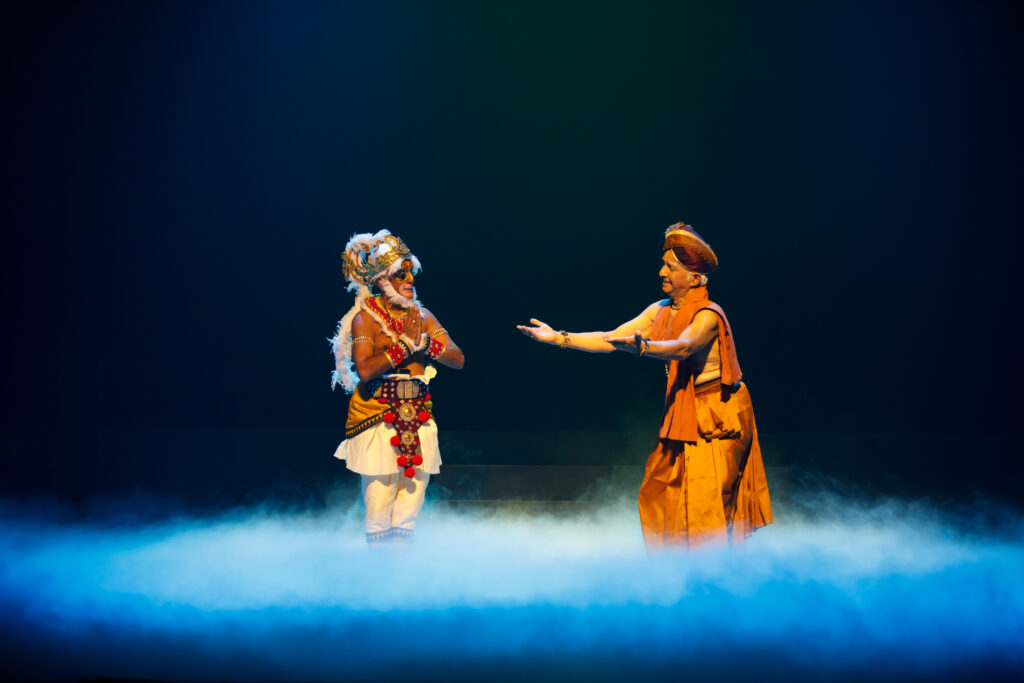
Screening of Anjaneyam- Hanuman’s Ramayana by Esplanade Theatres in collaboration with SISTIC Live From May 24th – 31st, Anjaneyam- Hanuman’s Ramayana, one of the master-piece ensemble productions from 2017 produced by Apsaras Arts was invited to be part of a showcase series by the Esplanade Theatres by the Bay and SISTIC (the largest ticketing platform) for a week long live web streaming. Here is a digest of this memorable week and multiple dialogues that were hosted on social media channels with the Artistic Director, choreographer, set and costume designer to understand the creative process behind this epic production. Apsaras Arts was invited to be part of a joint showcase by Singapore’s Esplanade, Theatres by the Bay and SISTIC (largest ticketing platform in Singapore) for a Live web streaming. The showcases included 3 locally created productions from a diversity of cultures- Chinese, Malay and Indian genres. The production, Anjaneyam – Hanuman’s Ramayana which premiered for November 2017 as part of Esplanade’s annual Kala Utsavam Festival was selected to be a part of this inaugural prestigious feature. Over 8 days, a substantial number of tickets were sold to audiences from Singapore and overseas to watch the entire production from the comfort of their homes. Patrons could avail these tickets at no cost or offer to pay a nominal donation which was presented to support Apsaras Arts during this pandemic. There has also been encouragement for this production in receiving greater international visibility. Digital outreach is the new-normal as arts companies engage with global viewers in times of Covid19. In the course of the week, reflective conversations on the production were organised to provide deeper insights on its creative process. Esplanade hosted a talk on 30 May, where Aravinth Kumarasamy, Artistic Director of this production spoke at length on how this staging was made possible and the long-standing relationship Apsaras Arts has created in collaboration with Esplanade Theatres over the past 15 years showcasing many innovative works. Rajeshwari Ramachandran, Producer Esplanade, said, “It’s a lot of hard work and we are proud of our collaborations with Apsaras Arts with you (Aravinth) and, Mami (late Smt Neila Satyalingam). Our relationship is so precious and these works are so valuable for the company and we appreciate how it has been performed and received in Singapore and staged to audiences all over the world.”https://www.facebook.com/EsplanadeSG/videos/567014130671300 On16th May, @Samarpanafortheartsandwellbeing Instagram channel hosted a dialogue on The Making of “Anjaneya, Hanuman’s Ramayana” by Aravinth Kumaraswamy, Artistic Director interviewed by Chitra Sundaram, Dance-theatre performer, lecturer, dramaturg from London, UK. This hour-long session included a highly interactive audience who posted questions on the creative process for this epic production. Chitra Sundaram posed candid questions on the making of the mega-production covering the genesis of the idea, the text references and how the story culminated into a script. She also asked about the theatrical techniques employed and how Bharatanatyam collaborated with Javanese dance. They shared many interesting anecdotes about bringing legendary dancers VP Dhanajayan and C K Balagopalan who played roles of sage Valmiki and the aged Hanuman respectively. She also asked Aravinth to share what it was like working with the Esplanade Theatre, a much sort-after venue in Singapore. If you are interested in the creative process of a production, don’t miss this insightful conversation. Link: https://youtu.be/lUm2rZOGl80 On 30th May another conversation, “Aahaaryam” was hosted by Akhila Krishnamurthy of Aalaap Concepts featuring Aravinth Kumaraswamy and Mohanapriyan Thavarajah on the design of the elaborate sets and costumes in the Anjaneyam production. In this talk, interspersed with scenes from the production fuelled an interactive Q&A and a comprehensive slide presentation displayed the vision and inspiration behind each design used in this production. Inspirations from Javanese batik, the Balinese representations of the Ramayana using elaborate head-gear, thematic jewellery for King Dasharatha’s Queens and the Apsaras from Sri Lanka, block printing designs from Javanese woodcarvings, recreated an authentic scene with the grandeur enhanced by digitalised paintings as back drop. https://www.facebook.com/v7.0/plugins/video.php?app_id=&channel=https%3A%2F%2Fstaticxx.facebook.com%2Fx%2Fconnect%2Fxd_arbiter%2F%3Fversion%3D46%23cb%3Dfe8d840bf55657edf%26domain%3Dasw.dmv.mybluehost.me%26is_canvas%3Dfalse%26origin%3Dhttps%253A%252F%252Fasw.dmv.mybluehost.me%252Ffdf3edf7c5cc02794%26relation%3Dparent.parent&container_width=740&href=https%3A%2F%2Fwww.facebook.com%2Ftheaalaap%2Fvideos%2F299430271082831&locale=en_GB&sdk=joey&width=825 For information on Anjaneyam, behind the production. Link: https://www.facebook.com/hanumansramayana
A life in Dance
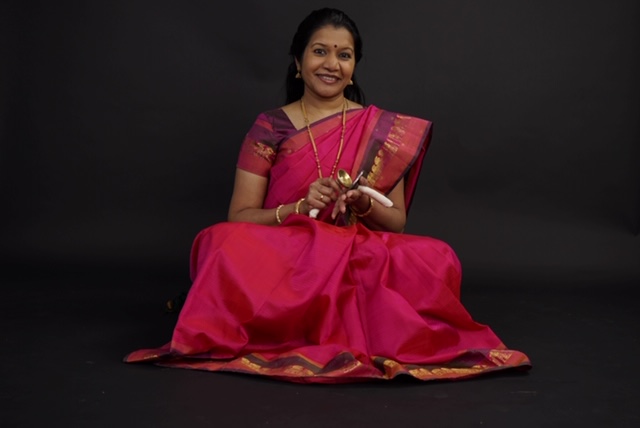
“A life in Dance” – An exclusive interview with Uma Chetty, Artistic Director Apsaras Arts, Virginia USA by Vidhya Nair “For me, dance is where I go to reset, it is my refuge. Dance gives me balance, the equilibrium to live my life. The 4Ds (Discipline, Determination, Dedication & Devotion) are the tenants I believe in and impart to my students as the guidance to take you forward in life.” Uma Chetty (nee Kannappan) has been an advocate of Bharatanatyam for most of her life. Now, living in Richmond, Virginia in the United States, she shared her dance journey and how it has been such a huge force of influence and inspiration in her life. Uma Chetty grew up in Singapore and watched her first Bharatanatyam performance at the Tanglin Club at the tender age of 7 in the 1970s. This dance recital was performed by the daughters of Mrs. Neila Satyalingam (“Mami”). At that age, the visual experience of the costumes, jewelry, eye movements and dramatic make-up completely captivated her and she persuaded her mother to sign her up for dance lessons. She began classes with Mami at Cairnhill Community Centre and over the years, participating in numerous Navaratri programs and school concerts. She recalls performing a “thillana” on television in the programme, “Siruvar Malar” in the 1980s. By 1983, she completed her Arangetram at the age of 14 and the entire Sathyalingam family was on-stage (at Victoria Theatre) supporting her debut performance. Throughout her school years at Raffles Girls and Raffles Junior College, she contin-ued to dance. She was called to perform and choreograph for the Tamil Language Society cultural programs and she actively participated in dance competitions. By the time she completed her un-dergraduate studies at NTU in Accountancy and started work at Ernst & Young, she had become a seasoned dancer. When she met her prospective groom from the US, she was happy to learn that she would receive full support to continue as a dancer. Before she bid adieu to Singapore, she per-formed with her peer, Lalitha Venkatasubramaniam in a duet recital at DBS Auditorium in 1993, again with the guidance and support of Mami and her family. When I asked her about her relationship with Mami, Uma described her with fondness, “She was firstly a teacher who inculcated the love for dance by inspiring you. For Mami, making mistakes was part of learning. It was not necessary to be perfect. She was a very strong lady, someone who dealt with many challenges, yet she was an effective mentor, giving good advice to any issues whether in dance or in life. Uma said that on many occasions, when she turned to Mami for advice, she would offer words of caution and always advocated patience. “Wait it out, Uma,” she would say. When she first landed in the US, she was first at Dover, Delaware, living in a small apartment. At a Deepavali party, she performed and was approached by a few mothers to consider teaching. This was not something she was prepared for or had planned, but she decided to give it a try. Thanks to the copious notes her mother had taken down during her lessons, she initially began with 2 stu-dents that gave her the confidence to pursue dance teaching seriously. By 2000, she had two sons and had embarked on a career in financial services after completing her CPA and MBA. At this junc-ture, she decided to start Apsaras Arts, with the blessings of both Sathyalingam Mama and Mami. She said they were very encouraging of this association and considered her an extension of them-selves, in line with what they had been doing in Singapore to propagate Indian classical arts. Be-sides their mentorship, Uma said, “None of this would have been possible without my husband, Ashok. If he didn’t look after the boys, allow me the breaks to study and pace myself and patiently share the housework and load of the family and home, I don’t think any of this would have hap-pened the way it did.”In the past 20 years, Uma has trained 4 other teachers who now run classes with her, teaching over 200 students. They have now completed 44 arangetrams at Apsaras Arts, Richmond USA. In 2009, she received the “Bharatha Kalai Mani” award from both Mama & Mami in Singapore for her achievements in Bharatanatyam in USA. Reflecting on this award, she recalls that it was a surprise at first, as her institute was only 9 years old then but over the last two decades, the value of this award has served as a significant motivation especially in her role to propagate Bharatanatyam in the US, teaching it with traditional authenticity, maintaining rigor in recital preparations and follow-ing a proper syllabus and examination structure. It was moving to hear Uma share her vivid memories of Mami. “Over the years, when I used to come back to Singapore to visit my parents, I would visit Mami at her home at Sarkies Road. I would always take a lesson from her and wait eagerly for the class to get over simply to stay back and spend time with Mami. She had an infectious sense of humor and we would often share a meal and break into peals of laughter.” Till today, Uma continues her practice of taking classes at Apsaras Arts Singapore with Mohanapriyan Thavarajah as she considers continuous learning a key reason for her longevity as a performer and teacher. For her, Apsaras Arts, Singapore after the founders’ demise continues to remain close to her heart and she feels connected with the current team lead by Aravinth Kumarasamy. Her parents, Mr. & Mrs. Kannappan have continued to sup-port Apsaras Arts, Singapore as Devatas through fund-raising and sharing their philanthropic con-tacts. They were invited as honorary guests at Natya Mela, an Apsaras Arts event in February 2017, the last event Mami attended before her demise in March 2017. Uma Chetty’s dance journey has now exceeded 35 years and as she
Bharatanatyam Evolves From Temple to Theatre and back again
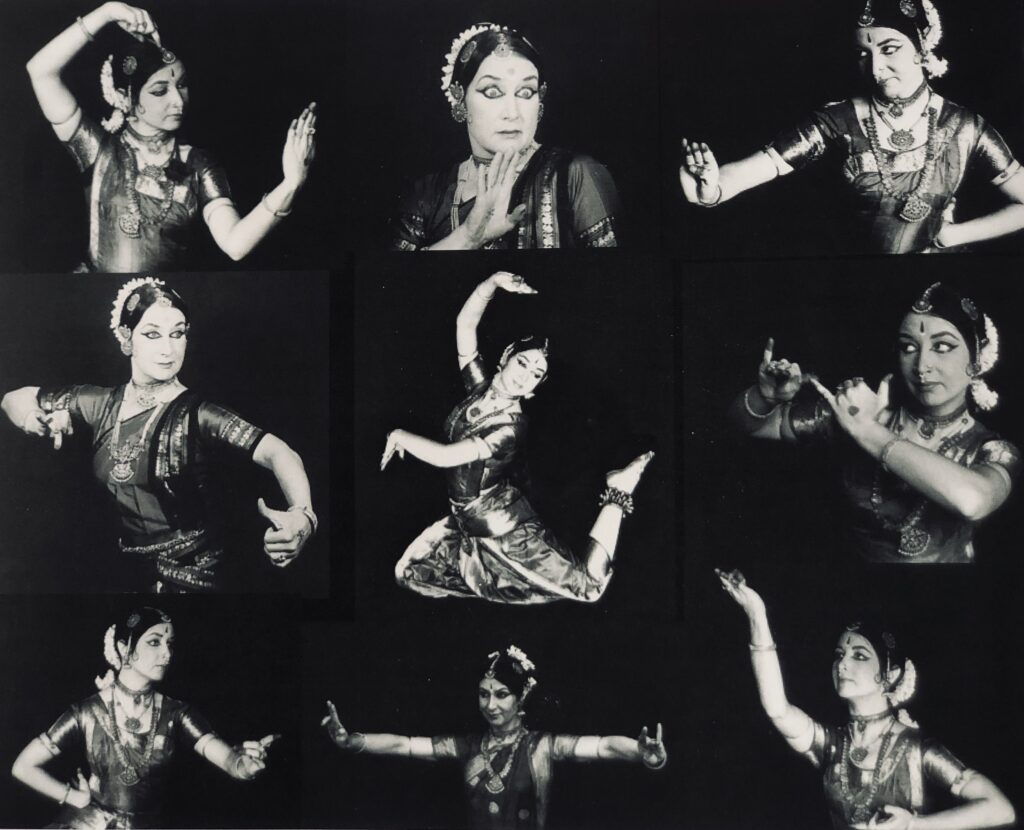
By Anne-Marie Gaston Anne-Marie Gaston (1941-2018) traces the development of Bharatanatyam from its religious and secular roots. She gives details of the teachers who were most influential in the transmission of the dance form from traditional to modern and discusses the role of different interpretations(banis). By describing traditional and modern performances and choreography, she traces changes in the repertoire and presentation that have taken place during the post-revival era. Comments from the author’s in-depth studies of Bharatanatyam as both performer and academic, give a historical perspective to the current manifestation of the dance. Her observations are drawn especially from recitals at the Madras Winter Festivals 2011-15. The volume is profusely illustrated with the author’s own photographs. “In 1964, I began my studies of Bharatanatyam in Chennai with Ellappa Pillai. My performing career in India began in 1966 and in Canada in 1967, presenting the full Bharatanatyam classical margam repertoire. Over the years, this repertoire was collected by studying with several dance masters, male and female, hereditary and non-hereditary. I always saw dance as part of an integrated cultural expression, since it was my visit to the Nataraja temple in Chidambaram where for the first time I saw the karanas on the walls on the gopurams and the huge niche figures of Shiva dancing that first inspired me. Since 1964, I have experienced first-hand the trends and innovations which have taken place within Bharatanatyam and within the landscape of Indian classical dance has a whole. Much of my account is based on personal experience.” “Indian dance has been my lifelong passion. In this book I have drawn on the knowledge I have acquired, as performer, teacher and academic, over a lifetime of immersion in the world of Indian dance. I continue tp be fascinated by the development of Bharatanatyam and other Indian classical styles, both in India and worldwide. Why the basic essence of classical Bharatanatyam has been carefully preserved, much has changed and will continue to do so as the style evolves. It was inspiring and enlightening for me to experience current developments in the dance in Chennai, the artistic center of Bharatanatyam. The many styles of classical Indian dance are very much alive and well. The global stage for this art form is vast and expanding. I hope that the material I have presented will help to uncover some of the forces: cultural, social, political and aesthetic, which have guided Bharatanatyam as it evolves.” About the author Anne-Marie Gaston(1941-2018) studied classical dances and other arts in India from 1964. She had an M.Litt, and a D.Phil from Oxford University Indian arts and taught at Universities and Colleges throughout North America and UK. From 1967 onward, she performed several styles of classical Indian dances(Bharatanatyam, Odissi, Kuchipudi, Kathakali, Chhau and Kathak) extensively in India, Europe and North America, receiving much critical acclaim. Her pioneering work using mixed-media in Indian dance presentations, emphasised the relationships among dance, sculpture and painting. Dr. Gaston, also known as Anjali, choreographed and staged many recitals on non-traditional themes. Her performances can be viewed at www.culturalhorizons.ca. Anne-Marie died at home in Ottawa, Canada, in April 2018.
Awards
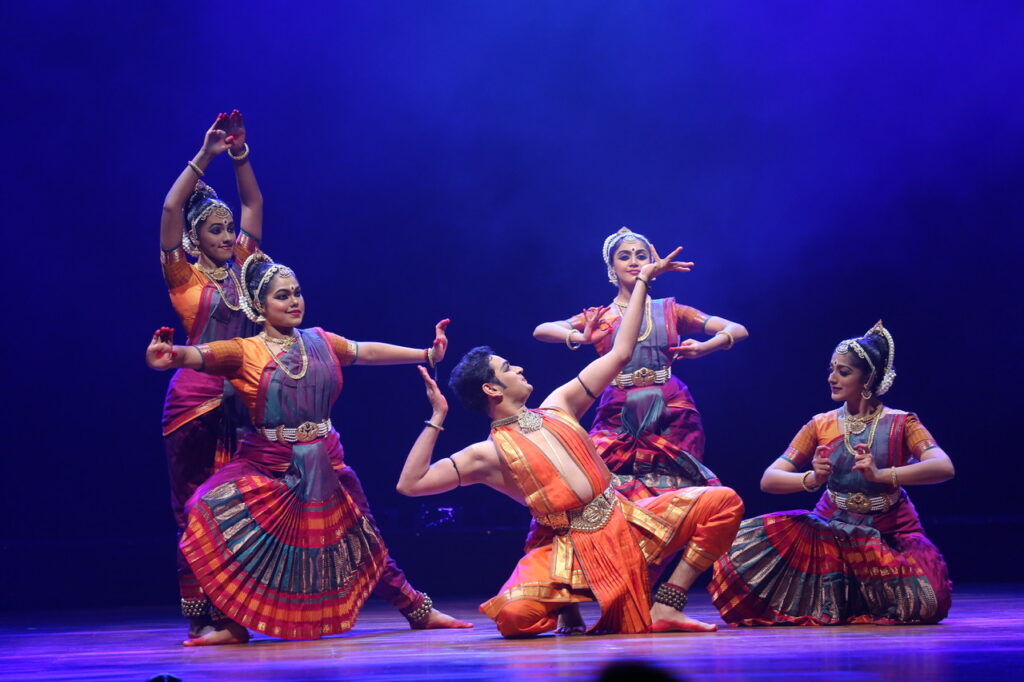
Apsaras Arts receives The Steward of Singapore’s Intangibile Cultural Heritage Award 2020 The month of June began on a momentous note with Apsaras Arts being selected as one of the 6 organisations to receive The Stewards of Singapore’s Intangible Cultural Heritage Award. This award aims to recognise practitioners (individual and groups) of intangible cultural heritage (ICH) who are dedicated to the promotion and transmission of their practices and have made outstanding contributions in their field. This award conferred by the National Heritage Board (NHB) is one of the key recommendations for the safeguarding of ICH, as part of Our SG Heritage Plan, the masterplan for the heritage and museum sector for 2018 to 2022. “We are deeply honoured & humbled, for Apsaras Arts to win this award. This award recognises our Founders vision to create a dance company to celebrate our local dance traditions, and to nurture young aspiring talents to be showcased internationally. This recognition encourages our current generation of art-makers who are striving with our mission. For Indian classical dance to be considered an intangible cultural heritage of Singapore, is a sacred responsibility, Apsaras Arts has immense pride in being its custodian here in Singapore, to hand it down to the next generations of Singaporeans as their cultural heritage and as a living tradition” – Aravinth Kumarasamy, Artistic Director, Apsaras Arts This recognition was covered in a two-page feature in the national paper, Straits Times and will be conferred in person at a later date. In gratitude of the community and to commemorate the 43 years of it’s service at Singapore, a video was released on 9 June 2020 showcasing 43 faces and voices associated with the Apsaras Arts company sharing adjectives that reflect their relationship and what this company means to them. SICH Award 2020 Link: https://youtu.be/idmSmkLxdQE